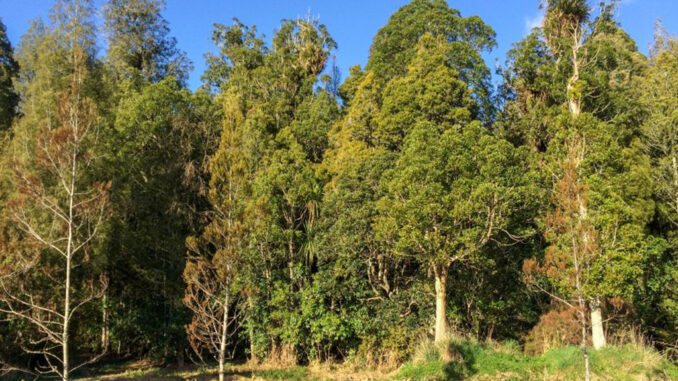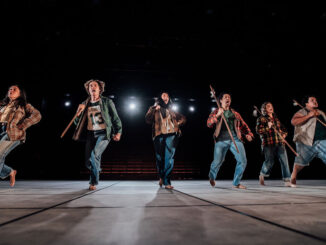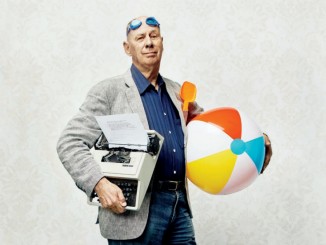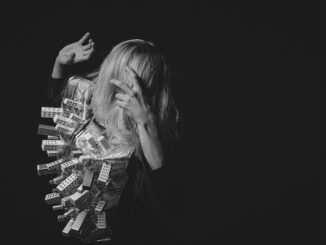
Outrage over Shakespeare Globe Centre New Zealand’s (SGCNZ) unsuccessful funding application to Creative New Zealand has generated a flood of local and international headlines. Commentary has derided Creative New Zealand for defunding SGCNZ and “cancelling” Shakespeare.
This fuss is distracting from the real arts funding scandal: Creative New Zealand has not been given enough money to meet the needs of Aotearoa’s arts sector as it rebuilds from the pandemic.
I’ve made this argument in a column published by Stuff. This Theatre Scenes post is a companion piece, offering some further notes about Creative New Zealand and arts funding with more context and nuance than I could fit into the column.
Here’s everything you ever wanted to know about arts funding in Aotearoa New Zealand – and more!
1. Creative New Zealand is a crown entity established in 1994, replacing the Queen Elizabeth II Arts Council of New Zealand. CNZ staff report to the governing body Arts Council of New Zealand Toi Aotearoa, which seeks “to encourage, promote, and support the arts in New Zealand for the benefit of all New Zealanders.” CNZ primarily achieves this by distributing funding across a wide range of artforms – including dance, theatre, literature, visual arts, music, community arts and more. Many of the local books we read, and shows, concerts and festivals we attend would not be possible without CNZ dollars. One of CNZ’s most important funds is Toi Ake, supporting the protection, development and retention of heritage ngā toi Māori. CNZ reports it funded projects involving 7000 artworks, 258,000 participants, and 8 million attendees between 2020/2021.
2. Whilst the Taxpayer’s Union has often attempted to stoke outrage by trolling CNZ’s funding decisions, the taxpayer’s direct contribution to CNZ is meagre. In 2006/2007 the crown gave $15.45m to CNZ – the equivalent of $21.56m in today’s dollars. However, CNZ only received $16.68m in baseline funding in the Government’s 2022 budget. CNZ’s crown funding was frozen at an annual $15.89m between 2010-2019 (a period stretching from the austerity years of the Key/English National Government and into the Ardern Labour Government’s first term).
3. New Zealand’s population has grown by almost 1 million people between 2006 and 2022, but the Government’s budget allocation to CNZ hasn’t similarly expanded to ensure all New Zealanders have the opportunity to access and benefit from the arts – as it stands, Government funding hasn’t even kept up with inflation. CNZ estimates that this year’s Government budget allocation of $16.68m makes up 0.01% of the Crown’s core expenses – effectively a rounding error.
4. A colonial hangover of New Zealand’s arts funding structure is that the New Zealand Symphony Orchestra (NZSO) and the Royal New Zealand Ballet (RNZB) are set up as crown entities and receive funding directly from Mānatu Taonga Ministry of Culture and Heritage (MCH) rather than going through CNZ. The NZSO receives more taxpayer money than CNZ’s baseline funding ($19.7m for 2022/2023), while the Royal New Zealand Ballet gets the equivalent of half of CNZ’s crown income ($8.1m) – valuing two arts organisations higher than entire art forms supported by CNZ. In comparison, the Government gives crown entity Te Matatini $2.9m (increased this year from $1.9m) to support kapa haka Māori performing arts, an inequity called out by Te Pāti Māori. The NZ Film Commission, NZ Music Commission and NZ on Air make up the rest of the Government’s arts funding infrastructure.
5. I’m less interested in pitting NZSO and RZNB against the rest of the arts industry. I’m more interested in using these organisations as a benchmark: we should be funding more organisations at their level.
6.The majority of CNZ’s income comes from the Lottery Grants Board. The lotteries portion of CNZ’s annual budget has fluctuated wildly over the past ten years depending on how many lotto and instant kiwi tickets New Zealanders purchase – $47m in 2019/2020, $39m in 2018/2019, $30m in 2015/2016.
7. Approximately the equivalent of 12% of CNZ’s funding has been spent on operating costs over the past 5 years – the rest is funnelled back to organisations and artists through competitive funding schemes and awards.
8. 55% of CNZ’s investments goes through the Toi Tōtara Haemata (arts leadership) and Toi Uru Kahikatea (arts development) schemes. These prioritise supporting key arts organisations with recurrent funding over 3-year cycles. Only organisations invited by CNZ can apply for these schemes.
9. 23 Tōtara arts organisations receive core funding from CNZ, including ARTSPACE, Auckland Philharmonia, Auckland Theatre Company, Auckland Arts Festival, Basement Theatre, Chamber Music NZ and Taki Rua. CNZ is investing $50m over 2023-2025, with organisations receiving an average 4% increase from the previous 3-year period (which doesn’t account for New Zealand’s record 7.3% rate of annual inflation).
10. 58 Kahikatea arts organisations are sharing $54m over 2023-2025. Court Theatre and NZ Opera receive over a million each year, with the fund also featuring BATS and Circa Theatre, NZ Dance Company, The Big Idea and UoA and VUW literary presses. After identifying a gap in the number of Māori and Pacific-led organisations, four new organisations have joined Kahikatea: our longest surviving independent Māori theatre company Te Rākau Hua o te Wao Tapu, Te Tairāwhiti Arts Festival, Kia Mau Festival and Toi Ngāpuhi. This is a positive step towards addressing the systematic underinvestment in Ngā Toi Māori and Pacific Arts – funding for Māori and Pacific-led organisations in Kahikatea doubling from 13.86% to 26.25% of the available fund.
11. It is worth noting that CNZ funding is not the sole income for these organisations, who need to find other income through sales, councils, trusts, private giving and more.
12. I have been an external industry peer assessor for CNZ and appreciate the rigour of the process: no funding decision is taken lightly. Most applications are assessed by two external assessors with further moderation by CNZ. Kahikatea applications and assessments were also reviewed by a separate external panel. I wrote in my opinion piece that sometimes as an assessor I’ve disagreed with CNZ’s final funding decisions. More often I just feel disheartened that so many worthy projects miss out when funds are tight. Alice Canton has offered an exhaustive twitter thread about CNZ’s assessment processes if you’d like to know more.
13. Within a competitive and limited funding landscape, there will be applicants who don’t get funded. After ten years as a Kahikatea client, Shakespeare Globe Centre New Zealand (SGCNZ), which runs the Sheillah Winn Shakespeare Festival, was unsuccessful in its Kahikatea application for $31K over 3 years. SGCNZ are able to apply for other CNZ funding rounds.
14. The Spinoff Journalist and Playwright Sam Brooks writes: “That funding makes up just over 10% of their annual $300,000 budget, and the organisation is not reliant on funding from the agency to operate… One of the reasons given by an assessor in feedback, which created particular outrage, was that Shakespeare was “located within a canon of imperialism”. It’s worth noting that this piece of feedback was excerpted from an open letter calling for an inquiry into Creative New Zealand, and does not reflect the entirety of the feedback the Centre received on their application, nor does it form the sole basis of the council’s decision… reative New Zealand CEO Stephen Wainwright noted that it was less about the proposal itself and “more about other proposals that were deemed more attractive.”
15. SCGNZ supporter Terry Sheat has led attack on CNZ, calling for a public inquiry in an open letter and accusing CNZ of being an “artistic Taliban”. Sheat argues on Newsroom that “CNZ appears to be busy funding new arts organisations in their own image to replace existing professional arts infrastructure”.
16. SGCNZ’s campaign against CNZ has been effective but also extraordinarily destructive. Rather than welcoming the increased funding to Māori and Moana arts, and making the case that CNZ needs to be better funded so all arts organisations can benefit, the focus has all been about SGCNZ. I fear that this opens the door for politicians to take money away from CNZ rather than growing its resource. A Newstalk ZB journalist commented “A quick trawl through the funding rounds and the decisions that are made (and I have to offer a quick comment that there are some wonderful artists that have been funded by CNZ) but God they fund some crap.” Now every time CNZ release funding results there will be questions about why some arts projects are being funded over Shakespeare.
17. CNZ needs to get better at its own storytelling when announcing funding results – offering more than just list of names of artists/organisations and a vague statement about what the funding is going to could help us get more excited about the awesome art being supported.
18. SGCNZ has changed thousands of lives over its 30 year history, and has been an important way that young New Zealanders have been able to participate in theatre and the arts. ShowQuest, billed as “Aotearoa’s biggest performing arts competition” is funded by the Ministry of Education. Autaia (a partnership between Auckland Live and Hawaiki TŪ) is a new and growing platform for rangatahi to create original Haka theatre performances with mentorship by a team of professional Māori artists. This year students from three kura kaupapa Māori and five kura auraki secondary schools took part and also had the opportunity to gain NCEA credits. All of these programmes have a place and should be resourced. Prime Minister Jacinda Ardern has made overtures about funding SGCNZ through the Ministry of Education.
19. Arts on Tour NZ, which supports affordable rural touring, also missed out in the latest Kahikitea round. A petition calling for the reinstatement of its funding states: “The choice of Creative New Zealand to cut this funding suggests that small towns and communities are irrelevant, invisible and undeserving of high quality New Zealand cultural experiences through a touring arts programme.”
20. The results of the Annual Arts Grants, which funds a year’s worth of activities up to $150,000, has also caused hardship for arts organisations that missed out. This year’s round had a success rate of only 46% compared with 80% the previous year. Applicants requested $7.1m; CNZ could only fund $2.8m. The Annual Arts Grants round is invitation only for artists and organisations who have a track record with CNZ.
21. Meanwhile, CNZ has just $9.08m to invest across 4 general arts grants rounds in 2022/2023 compared with $17.7m in 2021/22.
22. Some have gone public about missing out on funding and what it means for them. Theatre company Nightsong writes on its emergency fundraising campaign: “Like much of the industry, our plans are now in disarray. There are opportunities to reapply for smaller parts of our annual programme, but not to stabilise in time.” Nightsong is part of cohort of independent that were declined or had their funding reduced in the latest Annual Arts Grants round. The companies are: A Slightly Isolated Dog, Binge Culture, EBKM (Eleanor Bishop & Karin McCracken), Nightsong (all declined), Trick of the Light (reduction from $150k to $100k). All of these companies have previously been funded under the annual arts grant, the bulk for the last two years. They report that the loss of funding is devastating. In a deeply concerning trend for independent and emerging artists, Auckland Fringe, NZ Fringe and Dunedin Fringe all reported being unsuccessful in funding rounds this year. Auckland Pride’s plan to build momentum for rainbow arts by funding its Creative Director role has been dashed.
23. One of the big stories of arts funding and the pandemic is the scaling up of Mānatu Taonga MCH. The Arts and Culture Covid recovery programme of $495m sees the Ministry administering funding programmes that would usually be under CNZ’s remit. The Cultural Sector Regeneration Fund has $28m on offer to help the arts, culture and heritage sectors recover from Covid-19 and support projects that will result in lasting benefits. While there are exciting blue skies projects in the mix, there is something perverse about offering funding for new innovative projects while core arts activities go unfunded or underfunded because the Government hasn’t similarly invested in CNZ.
24. For the health of the arts sector, it is essential that CNZ receives a substantial funding boost in the Government’s 2023 budget. As a starting point, Mānatu Taonga should divert unspent Covid recovery funds to CNZ.
25. In exchange, funding processes need to continue to change to better support artist welfare. Auckland Fringe Director Borni Te Rongopai Tukiwaho expresses how CNZ’s funding decisions and communications have “played havoc with the mental health, resilience and sustainability of our creative sector.” My academic colleagues Mark Harvey and Molly Mullen argue that our funding systems fail to “deliver equitable, sustainable income for artists or arts organisations” or “equitable and sustainable access to the arts for all people.”
26. The role of the lotteries grants board in funding arts and sports is currently under review. Divestment from lotteries grants would be transformative for the arts sector, with CNZ’s annual budget no longer at the mercy of lotto sales. RNZ’s finding that 70% of lotto sales come from stores in the poorest half of the country underlines how untenable it is for the arts to continue to receive core funding from lotteries gambling.
27. We should demand our political parties bring comprehensive arts policies to the next election. A national Ngā Toi strategy could focus priorities around dealing with the inequities of our current structures, harnessing the social and wellbeing benefits of ngā toi, and increasing access and participation. We could follow Ireland and trial an arts basic income – funding artists, not just projects. And for a cool $15m, we could also reopen Auckland St James’ Theatre – a one off investment for long term benefit.
28. CNZ will never be able to fund everything. We also need to look to the role of Councils in supporting local arts. With Wayne Brown making noises about Auckland Unlimited, which funds Auckland Live, we need to make sure that our councils continue to grow their support of the arts for local communities. (See Taumata Toi-a-Iwi’s Mapping the Auckland Funding Ecosystem for Ngā Toi – Culture, Creativity and the Arts for information about how CNZ funding sits alongside other funders in Tāmaki Makaurau).
29. NZ on Air is set for a massive budget cut with a chunk of its funding being given to the new merged RNZ/TVNZ entity. TheSpinoff’s Duncan Grieve has noted in the new media environment there is a “blurriness of the line delineating Creative NZ, NZ On Air and the NZ Film Commission” (the other pieces of the Government’s arts funding mix) which “could be the next reform battleground.” It is vital we continue to make the case for why CNZ’s specialist knowledge and funding is so vital for our sector.
30. We need more arts funding for everyone: toi Māori, Pacific arts, the regions, accessibility initiatives, tamariki and rangatahi, rainbow arts, and many more.
CNZ’s funding figures sourced from creativenz.govt.nz.
More Essential Commentary:
“The ultimate result of all of this is sad, and simple: there’s just less art. Less funded art means fewer artists making work, and certainly fewer artists making quality work. Not all great art is funded, sure, but even excellent artists struggle in a country this size; and an artist’s ability and desire to live in poverty decreases the older and more jaded they get. As a New Zealand artist myself, I’d like to say that when artists suffer, audiences suffer, but the bleak reality is that audiences will find art wherever they can get it. It just might not be from here.” – Sam Brooks
“It would be a massive, awesome act of decolonisation if we discovered our own stories first and discovered Shakespeare afterwards. Wouldn’t it be great if young people could come home and say, ‘Hey, Mum, Dad, I just found this story and it’s really similar to Hinemoana and Tūtānekai. It’s Romeo and Juliet’.” – Dr Nicola Hyland
“This is the reality of navigating the no man’s land of contestable funding. Those are the rules – that nothing is promised. There is no project Auckland Pride is inherently or objectively more deserving of funding over. Therein lies the impossible situation we find ourselves in… Without fetishising resilience, as emerging artists fall through the cracks, it will be up to our arts administrators, arts leaders, arts gatekeepers to throw their best life rafts, to throw out their best lifelines, to open up their doors and resources, to make the stepping stones and pathways clearer than ever.” – Nathan Joe
“The loud and privelaged need to adress their own biases before grabbing their pitchforks and stirring up the villagers; and our lead organisations need to attend to their own backyards, examine and address their own unhelpful infrastructures. If we don’t begin to view Hauora/wellness needs as a neccessity rather a recognition or holistic approach, things won’t change.” – Borni Te Rongopai Tukiwaho




Leave a Reply